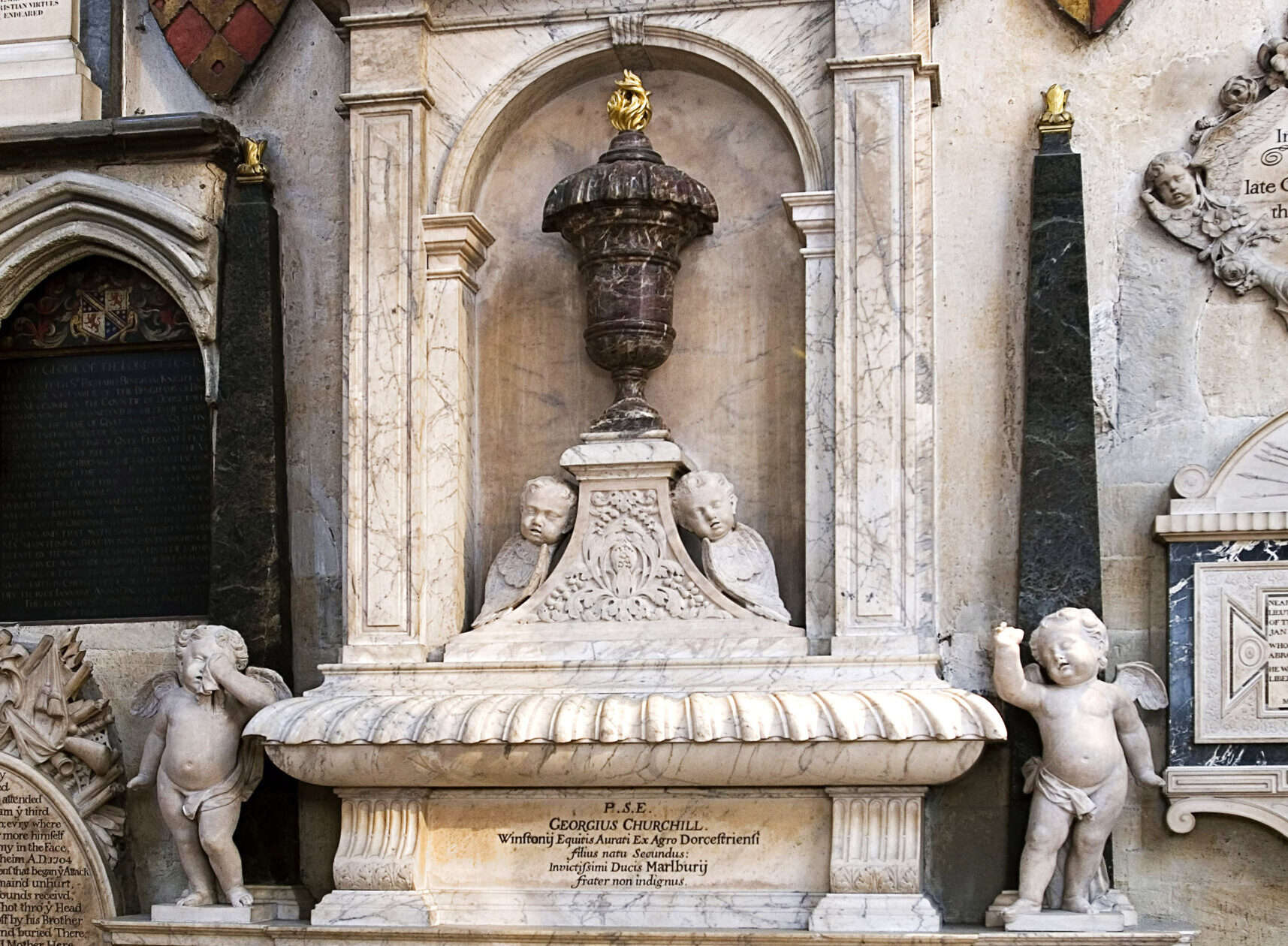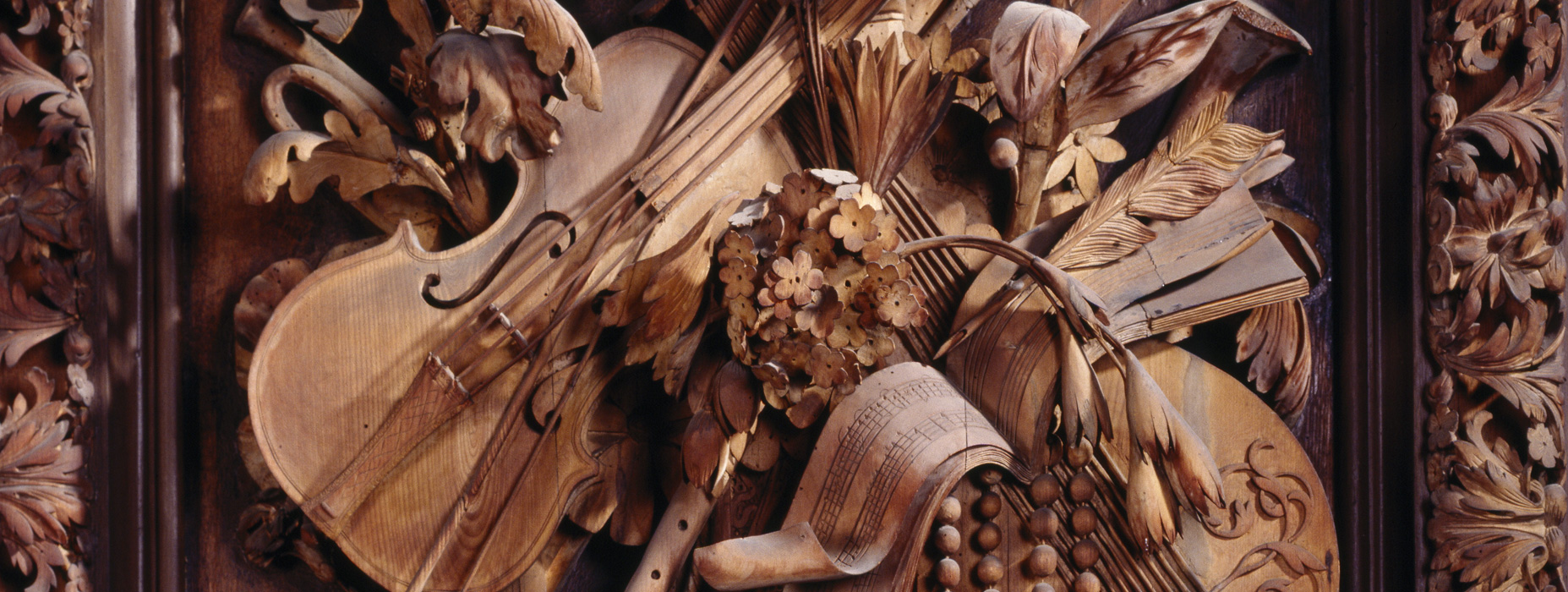Monument to Admiral George Churchill
Creator(s): Grinling Gibbons 1648-1721
Date: 1715
Accession Number: WA 0089
Materials: Marble
Location: Westminster Abbey, London, SW1 3PA
Credit Line (copyright notice for material) : By courtesy of the Dean and Chapter of Westminster
Online Catalogue Entry : https://www.westminster-abbey.org/abbey-commemorations/commemorations/george-john-arabella-and-henrietta-churchill

NOTES ON THE ARTWORK
This large monument of white and black marble to Admiral George Churchill by sculptor Grinling Gibbons stands in the south choir aisle of Westminster Abbey. Admiral George Churchill was buried nearby in the centre part of the nave of , near the choir gate on 12th May 1710.
The monument consists of a gadrooned sarcophagus between two mourning cherubs and obelisks. In front of the semi-circular headed niche of the background is an urn. On the centrepiece is a carved and painted shield of arms and crest (both repainted). Churchill’s quarterly shield includes his arms: “sable, a lion rampant argent, a canton of St George”.
A base supports the sarcophagus, and bears a Latin inscription which can be translated as:
Here lies interred George Churchill, second son of Sir Winston Churchill, Knight, of Dorsetshire, and worthy brother of John, Duke of Marlborough. From his early years trained to military affairs, and served with great honour by sea and land, under King Charles II and King James II. He was for the space of twenty years Gentleman of the Bedchamber to the most serene Prince George of Denmark, to whom his integrity, obsequiousness and virtue, rendered him dear and valuable. In the time of King William’s reign, when the French navy was defeated and burnt by the English at The Hague (a day ever memorable) he behaved himself with that vigour of soul and bravery as became an English officer. Soon after he was, by that Prince (who was a true judge of merit), made one of the Commissioners of the Admiralty, in which station the sea affairs which he was master of, he daily managed and adorned. At length, when under the happy reign of Queen Anne, the war against the French (those turbulent foes of England) was renewed, he was chosen one of the Admirals, and of the Council to the most high Prince of Denmark, Admiralissimo of Great Britain; and was partaker with his master of all his care and fatigue, which he happily managed, until the broken power of France quitted the seas; afterwards adhering to that best of Princes to his last, he then performed all the offices of a grateful and generous soul. At length, broken with toil and diseases, amidst the embraces and tears of his family, dependants and servants, whom his humanity, services and liberality, made grateful, devoted and faithful to him, he, being unmarried, died like a pious, calm and cheerful man, the 8th of May 1710, aged 58 years



